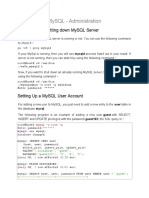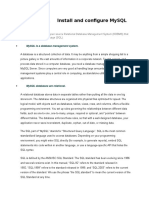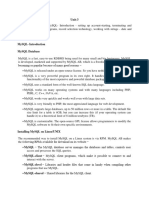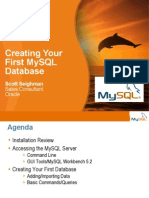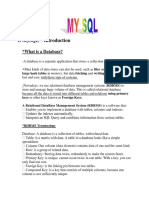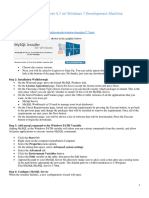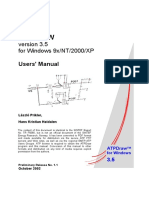0% found this document useful (0 votes)
121 views27 pagesMySQL Admin Guide for B.Tech Students
This document provides information about administering and configuring MySQL. It discusses various tools and commands for basic server administration like mysqladmin, starting and stopping the MySQL server, checking server status, managing client processes, altering the server configuration using an option file, and using the SET command to modify system and connection variables. The mysqladmin, mysql.server, and SHOW commands are demonstrated along with modifying options in configuration files.
Uploaded by
zaibakhan8Copyright
© © All Rights Reserved
We take content rights seriously. If you suspect this is your content, claim it here.
Available Formats
Download as PPTX, PDF, TXT or read online on Scribd
0% found this document useful (0 votes)
121 views27 pagesMySQL Admin Guide for B.Tech Students
This document provides information about administering and configuring MySQL. It discusses various tools and commands for basic server administration like mysqladmin, starting and stopping the MySQL server, checking server status, managing client processes, altering the server configuration using an option file, and using the SET command to modify system and connection variables. The mysqladmin, mysql.server, and SHOW commands are demonstrated along with modifying options in configuration files.
Uploaded by
zaibakhan8Copyright
© © All Rights Reserved
We take content rights seriously. If you suspect this is your content, claim it here.
Available Formats
Download as PPTX, PDF, TXT or read online on Scribd
/ 27



